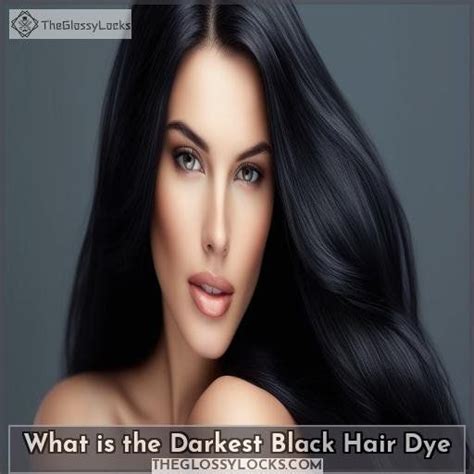Introduction
Black No. 1 dye, also known as Sudan Black B, is a synthetic dye renowned for its deep, intense black color and wide-ranging applications across various industries. This comprehensive guide delves into the properties, uses, and safety considerations surrounding this remarkable dye.

Chemical Properties and Structure
Black No. 1 dye is a water-insoluble, oil-soluble azo dye belonging to the Sudan family. Its molecular structure comprises two benzene rings linked by an azo bond (–N=N–). The presence of alkyl groups and an amino group confers its characteristic lipophilic nature.
Applications
Black No. 1 dye finds myriad applications due to its distinct black hue and other properties. Some of its notable uses include:
Textile Industry: Black No. 1 dye is extensively used in the textile industry for dyeing synthetic fabrics, such as nylon, polyester, and acrylics. It imparts a deep, durable black color that resists fading and washing.
Leather Coloring: It is employed in the leather industry to create a rich, black finish on leather products, including shoes, handbags, and belts.
Printing Inks: Black No. 1 dye is a key ingredient in black printing inks, offering exceptional color strength and print quality.
Cosmetics: It is commonly found in cosmetics, such as mascaras and eyeliners, due to its ability to safely and effectively create intense black shades.
Food Industry: Black No. 1 dye is approved for use in some foods, such as candy and chocolate, to enhance their black color.
Safety Considerations
While Black No. 1 dye is generally safe for use in various applications, it is important to consider potential health and environmental concerns.
Allergic Reactions: Some individuals may experience allergic reactions to Black No. 1 dye, manifesting as skin irritation, rashes, or respiratory issues.
Acute Toxicity: Ingestion of large amounts of Black No. 1 dye can lead to acute toxicity, including gastrointestinal distress and kidney damage.
Environmental Impact: Black No. 1 dye has been found to have ecotoxicological effects on aquatic organisms, such as fish and invertebrates.
Regulations
Black No. 1 dye is subject to various regulations and restrictions in different countries and industries. For example:
- The United States Food and Drug Administration (FDA) allows its use in some foods up to a maximum concentration of 0.2%.
- The European Union (EU) permits its use in cosmetics and textiles with certain restrictions.
- Several countries, including China and Japan, have banned its use in food products due to safety concerns.
Innovative Applications
Beyond its traditional uses, Black No. 1 dye has inspired innovative applications across diverse fields.
Biomedical Imaging: Researchers have explored the use of Black No. 1 dye as a contrast agent in biomedical imaging techniques, such as computed tomography (CT) and magnetic resonance imaging (MRI).
Drug Delivery: Black No. 1 dye-coated nanoparticles have shown promise in targeted drug delivery applications, enhancing drug efficacy and reducing side effects.
Antibacterial Surfaces: The incorporation of Black No. 1 dye into surface coatings has exhibited antibacterial properties, offering potential applications in healthcare and hygiene settings.
Useful Tables
Table 1: Properties of Black No. 1 Dye
| Property | Value |
|---|---|
| Chemical Formula | C24H22N4O2 |
| Molecular Weight | 414.47 g/mol |
| Physical Form | Solid powder |
| Color | Black |
| Solubility | Insoluble in water, Soluble in organic solvents |
Table 2: Applications of Black No. 1 Dye
| Industry | Application |
|---|---|
| Textile | Dyeing of synthetic fabrics |
| Leather | Black coloring of leather products |
| Printing | Black printing inks |
| Cosmetics | Black pigment in mascaras and eyeliners |
| Food | Color enhancement in candy and chocolate |
Table 3: Safety Considerations of Black No. 1 Dye
| Hazard | Potential Effects |
|---|---|
| Allergic Reactions | Skin irritation, rashes, respiratory issues |
| Acute Toxicity | Gastrointestinal distress, kidney damage |
| Environmental Impact | Ecotoxicity to aquatic organisms |
Table 4: Innovative Applications of Black No. 1 Dye
| Field | Application |
|---|---|
| Biomedical Imaging | Contrast agent in CT and MRI |
| Drug Delivery | Drug carrier for targeted delivery |
| Antibacterial Surfaces | Component of antibacterial coatings |
Tips and Tricks
- To achieve the best results when using Black No. 1 dye, follow the manufacturer’s instructions carefully.
- Wear appropriate protective gear, such as gloves and a dust mask, to minimize exposure and potential allergic reactions.
- Store Black No. 1 dye in a cool, dry place away from light and moisture.
- Dispose of used dye and contaminated materials according to local regulations.
Pros and Cons
Pros:
- Deep, intense black color
- Durable and resistant to fading
- Widely available and relatively inexpensive
- Versatile applications across industries
Cons:
- Potential for allergic reactions
- Acute toxicity in high doses
- Environmental impact concerns in certain applications
- Regulations and restrictions vary across jurisdictions
Conclusion
Black No. 1 dye remains a versatile and widely used synthetic dye, offering a deep, intense black color for a variety of applications. Its unique properties have also inspired innovative uses in biomedical imaging, drug delivery, and antibacterial surfaces. While it is generally safe for use when handled properly, it is essential to be aware of potential health and environmental concerns and comply
